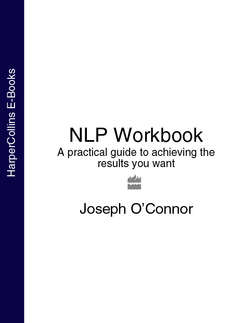Читать книгу NLP Workbook: A practical guide to achieving the results you want - Joseph O’Connor - Страница 23
The Meta Mirror
ОглавлениеThe meta mirror is a process developed by Robert Dilts to explore a relationship with another person. You can do this without moving, but it works best if you physically move to a different place for each of the different positions.
First, choose the relationship you wish to explore. Think about it first from your point of view (first position).
What makes it difficult?
What are you thinking and feeling in this relationship?
If you feel challenged, what neurological level does this challenge seem to come from?
Is it about your environment – where you work, the friends you have, your clothes, etc?
Is it about behaviour – what you do?
Do you feel your skills and competence are being challenged?
Do you think your beliefs and values are being challenged?
Do you feel yourself assailed on the identity level?
Is the other person saying one thing, but conveying something else in their body language?
Now leave your own viewpoint and prepare to look at the situation from a very different point of view. Imagine the situation from the other person’s point of view (second position).
As the other person, what do you think and feel?
How do you see yourself in the relationship? How do you react?
Which neurological level are you concerned about?
Does the other person (you) in this relationship seem to be congruent?
When you have explored this, shake off that second position and come back to yourself in the present moment.
Take another step to third position.
Consider both sides of the relationship dispassionately.
What sort of relationship is it?
What do you think of yourself (first position in the relationship)?
How do you feel towards yourself in this relationship?
Once you have some intuitions from third position, come back to yourself in the present moment.
Now take a further outside position (a fourth position). From this point of view, think about how your third position relates to your first position.
For example, in third position were you angry with yourself?
Resigned about the situation?
Wishing your first position would assert themselves more?
Feeling that your first position should be less assertive?
Be clear about how your third position relates to yourself in first position.
Once you are clear, come back to yourself in the here and now.
Now switch around your first position and third position reactions. For example, in first position you may feel overawed by the other person. In third position you may feel angry with the ‘you’ who is overawed. Switch the reaction and take the anger to first position. In first position, be angry with the other person.
What is that like?
What has changed?
How could this feeling be a resource here?
Now visit second position.
The meta mirror
How is the relationship different when the ‘first position you’ has this new resource?
Finish in the here and now in first position.
The meta mirror works because we mirror our outside relationships on the inside. Our response to our own actions is often exactly the resource we need in the outside world.
